When it comes to flowers, we often think of familiar species like roses, daisies, or sunflowers. However, there is another rich world of flowers waiting to be explored. Among them are beautiful and unique flowers that start with the letter “P”. Let’s take a look at some of these wonderful flowers together.
Different Types of Flowers that Start with P
Peony

Scientifically referred to as Paeonia, peonies are colorful, fragrant blooms that come in a variety of shades. They have cultural importance, are a symbol of romance and prosperity, and can endure for decades before becoming treasured garden ornaments that represent timeless beauty.
Peperomia
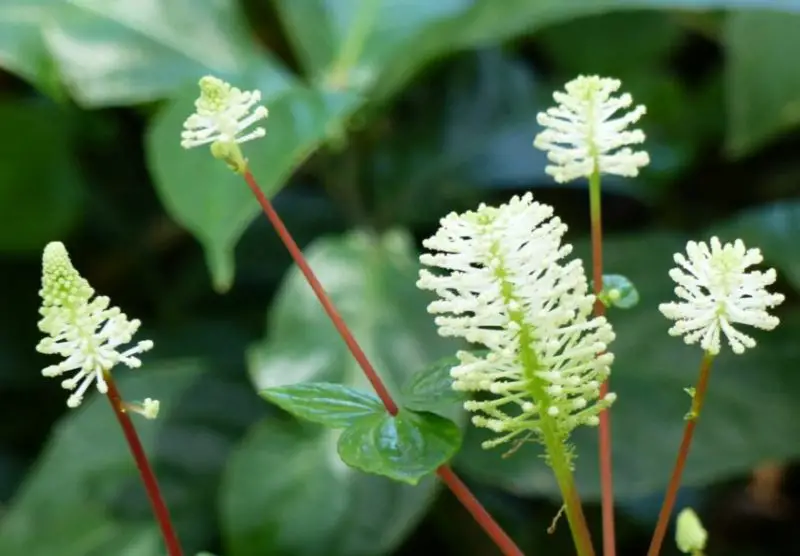
With more than 1,500 species, Peperomia is a varied genus of tropical plants prized for its eye-catching leaf. They are perfect for terrariums and compact places, growing well inside in indirect light with well-draining soil and conical spike flowers in shades of brown, yellow, or green. They grow on rotting wood and store water in their leaves, making them resilient and low maintenance.
Peppermint
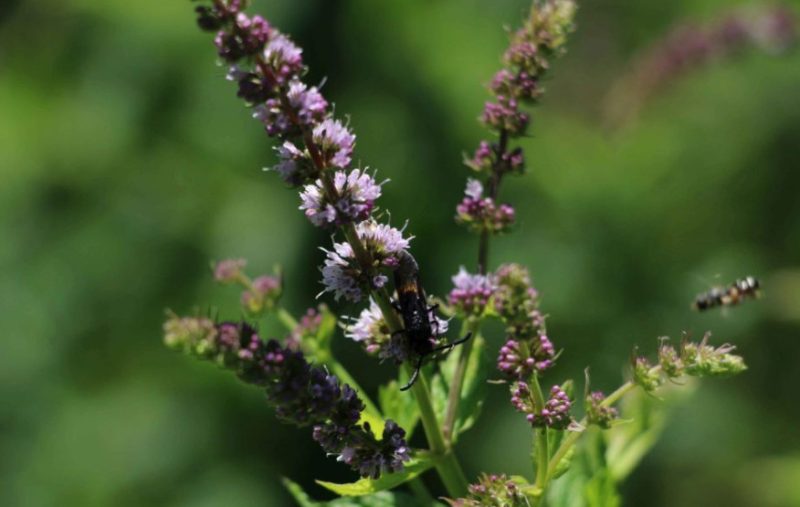
The fragrant peppermint herb belongs to the mint family (Lamiaceae) and is characterized by its little pink or white blooms and dark green leaves. It is cultivated for its calming and digestive properties as well as its potential uses in medicine and pest management. It multiplies quickly through subterranean rhizomes and thrives in moist soil and moderate shade, making it a useful plant for both house and health.
Persian Buttercup
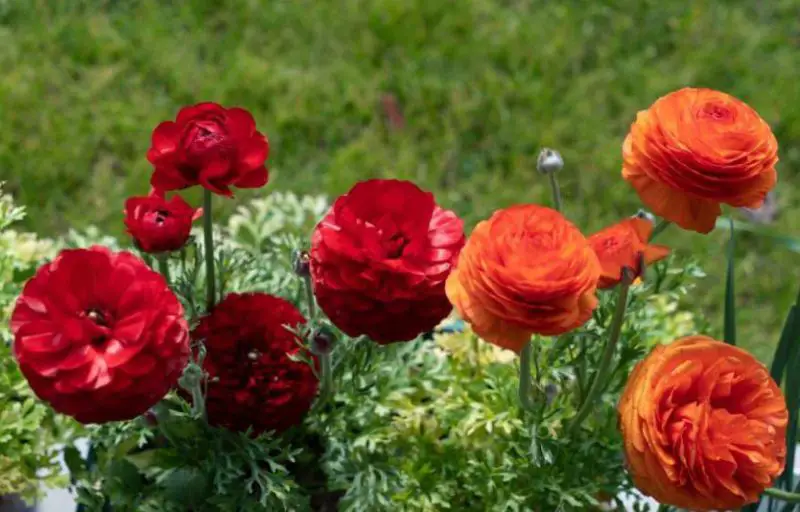
One member of the Ranunculaceae family that has some of the most beautiful flowers beginning with the letter P is the Persian Buttercup (Ranunculus asiaticus). It comes from southwest Asia and the eastern Mediterranean, and it blooms in bright colors including pink, red, orange, yellow, and white. It has been cultivated for ages and is important to Islamic and Persian art.
Painted Daisy
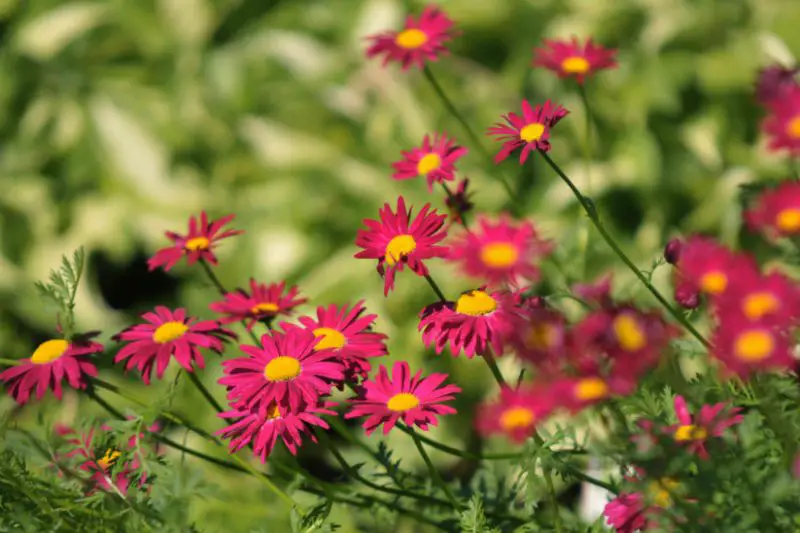
Once known as Chrysanthemum coccineum, the painted daisy (Tanacetum coccineum) is an eye-catching annual that grows to a height of two feet. Some have vivid colors, such as yellow centers and white petals, resembling daisies. Their beautiful aroma, which also drives away insects, draws pollinators.
Painted Sage
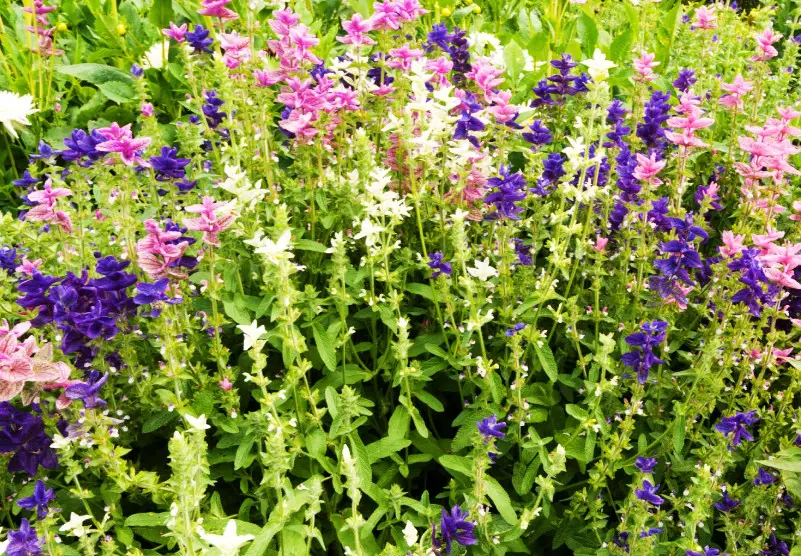
Salvia viridis, commonly known as Painted Sage, Annual Clary, or Horminum Sage, is a highly valued annual herb that is characterized by its colorful bracts that wrap the small blooms, creating an eye-catching display of texture and color.
Painted Tongue
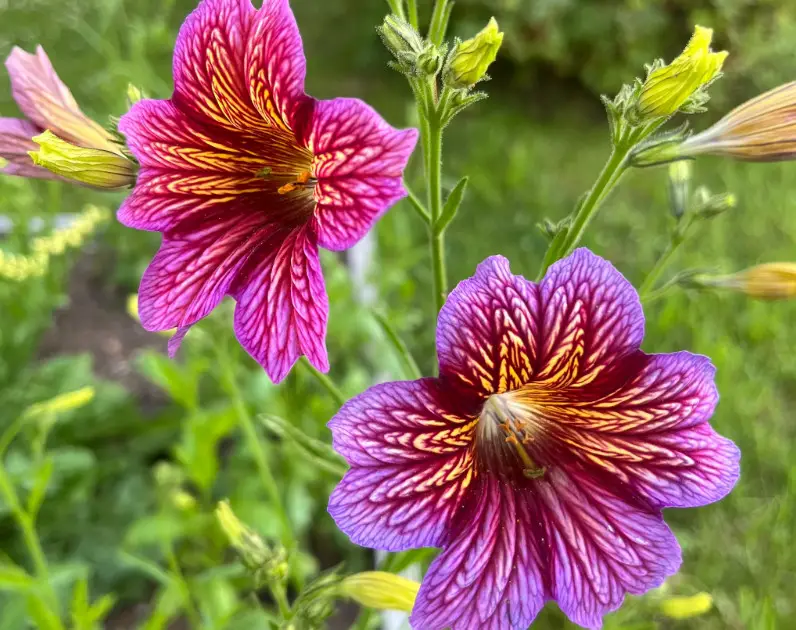
An annual flowering plant called Painted Tongue (Salpiglossis sinuata) has eye-catching flowers with elaborate patterning. Its name comes from the vivid purple, red, orange, yellow, or blue hues of its tubular blossoms, which resemble painted strokes.
Paintbrush Lily
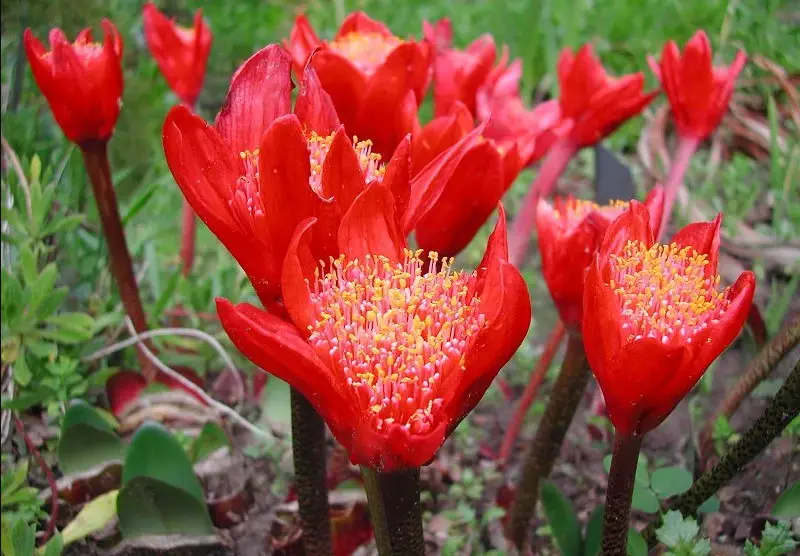
Paintbrush Lily (Haemanthus coccineus), sometimes called Blood Lily or April Fool Flower, with vivid scarlet-red bunches. Some plants have attractive blossoms, but they also have disagreeable odors coming from them. This is a reproductive tactic used to draw in particular pollinators.
Paper Daisy
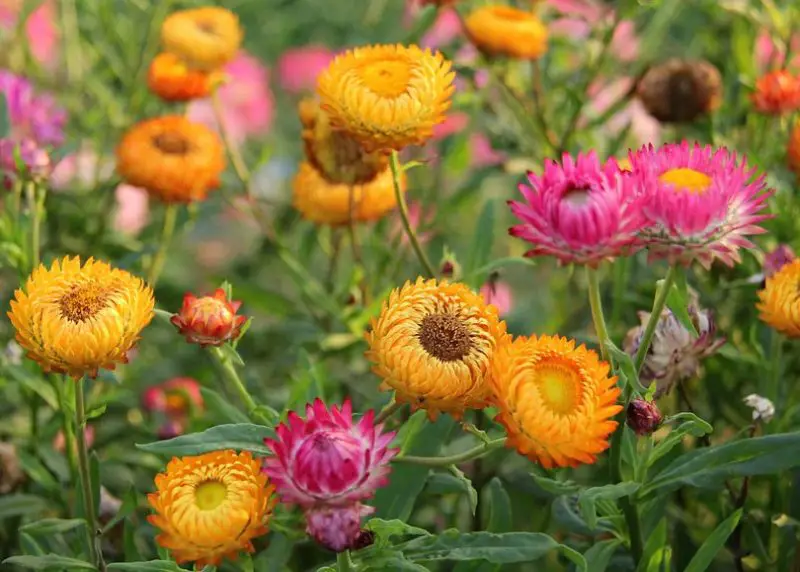
Paper Daisy (Xerochrysum bracteatum), sometimes referred to as Strawflower, is an Australian native perennial that is highly valued for its vivid and durable blooms. It thrives in full sun and well-drained soil, yielding colorful, daisy-like flowers that are brilliant red or orange in color. Their delicate petals, which hold color and shape even after drying, are ideal for dried flower arrangements.
Pansy
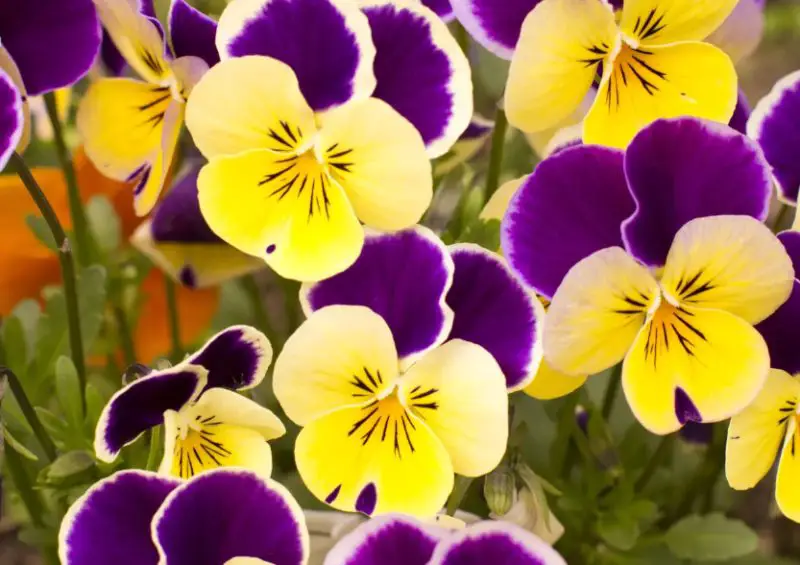
The Viola genus of plants includes pansies, which have adorable “faces” with unique petal patterns. They thrive in well-drained soil in cool temperatures, making them perfect for hanging baskets, borders, and pots. Blooming brightly in cool seasons, they symbolize admiration and thoughtfulness while also displaying perseverance. Their edible petals are not just beautiful; they have a mildly sweet flavor that goes well with salads and sweets.
Passiflora

Belonging to the Passiflora genus, Passiflora, sometimes called passion flowers or passion vines, are exotic blossoms with complex architecture and vivid colors. Abundant in warm climates, they are symbolic, evoking aspects of the Crucifixion. They are both memorable and nutrient-dense complements to tropical and subtropical landscapes because of their fleeting blossoms and delectable passion fruit.
Pasque Flower (Pulsatilla vulgaris)

The delicate perennial Pasque Flower (Pulsatilla vulgaris) has fern-like foliage and bell-shaped blooms that range in color from soft purple to vivid blue. Found in open, well-drained places, such as meadows, it represents fresh starts and the approach of spring. After blossoming, its “silver feathers” add to its charm.
Pearly Everlasting
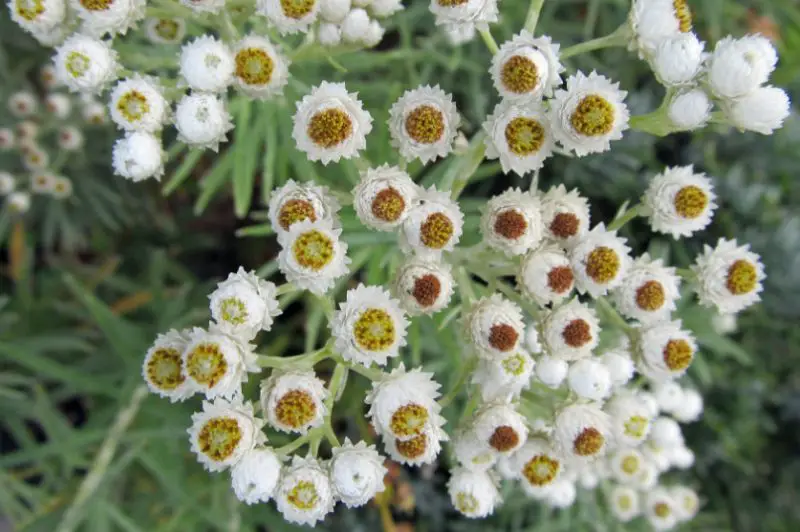
Originating in Asia and North America, Pearly Everlasting (Aphalis margaritacea) is a lovely perennial with pearl-like blooms and silver-gray leaves. Its long-lasting flowers make it a popular choice for dried flower arrangements and it thrives in full sunlight and well-drained soil. It requires little maintenance.
Pelargoniums

Geraniums, or Pelargoniums, are adaptable blooming plants with colorful blooms and fragrant foliage. They thrive in full sun, well-drained soil, and are ideal for gardens, hanging baskets, and pots. Signifying happy and friendly feelings, they provide a variety of fragrances, ranging from citrus to rose, adding a touch of fragrant charm to their aesthetic appeal.
Paper Mulberry
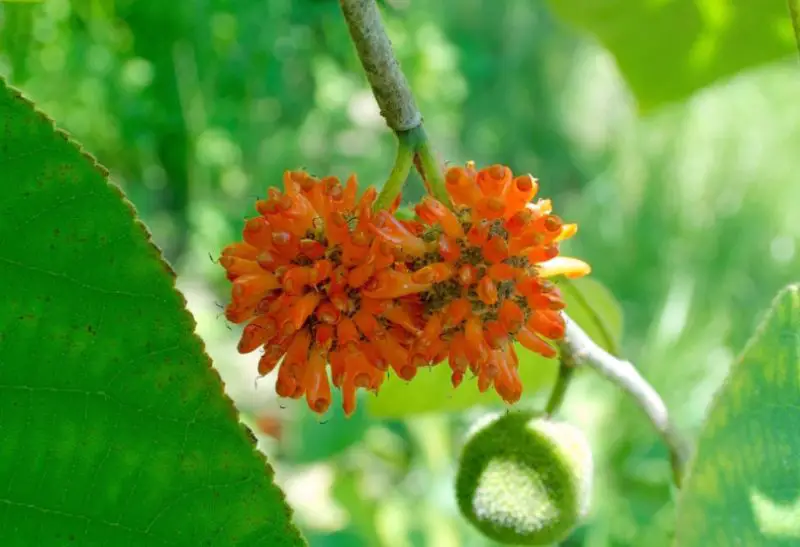
The deciduous Paper Mulberry, scientifically named Broussonetia papyrifera, is prized for its fibrous inner bark, which has long been utilized to manufacture paper and traditional fabrics. It is an Asian native that is also grown for its decorative qualities, such as its lobed leaves and subtle blooms.
Parrot’s Beak
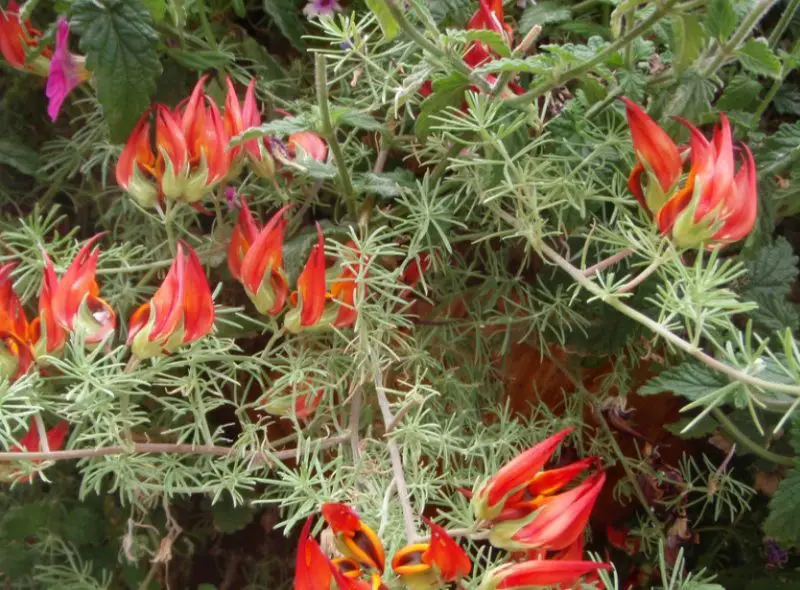
The Fabaceae family’s Parrot’s Beak (Lotus berthelotii) is a trailing plant that is well-known for its unusual, beak-shaped flowers. It is a distinctive addition to any garden with its cascading stems and bright blooms that resemble birds.
Peacock Orchid
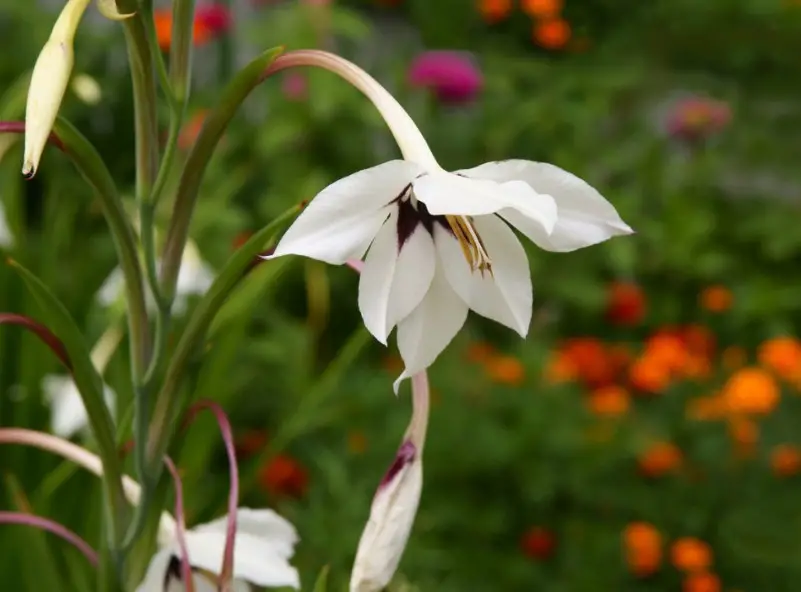
The Peacock Orchid, scientifically known as Acidanthera bicolor or Gladiolus callianthus, is a fragrant perennial bulb that is indigenous to South Africa. Its elegant white blossoms, which bloom in late summer and give elegance and a wonderful aroma to gardens, are embellished with a peacock feather-like pattern in the center.
Pencil Cholla
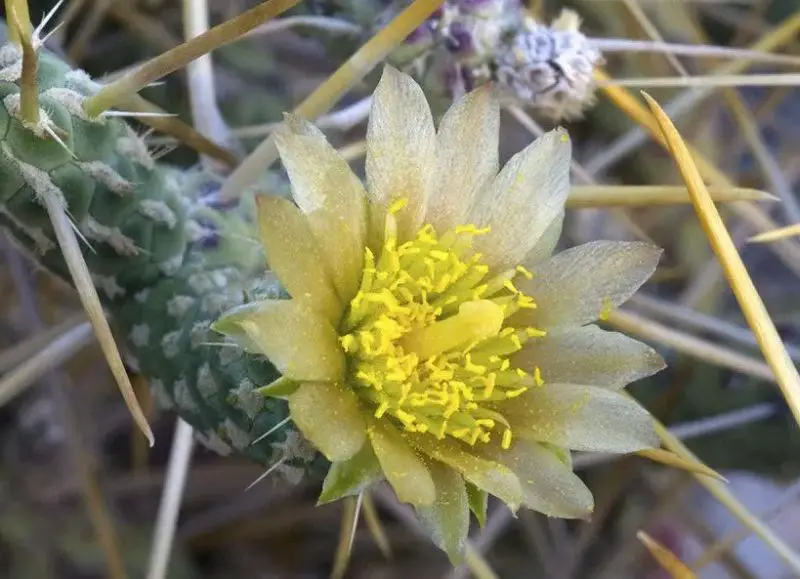
Pencil Cholla (Cylindropuntia ramosissima) is a shrubby cactus that grows up to 6 feet tall and is native to the southwestern United States and northern Mexico. It has slender, prickly stems that resemble pencils. It blooms with small, pinkish-purple flowers in late spring to early summer, providing beauty to its harsh surroundings. It thrives in hot, desert conditions.
Penstemon
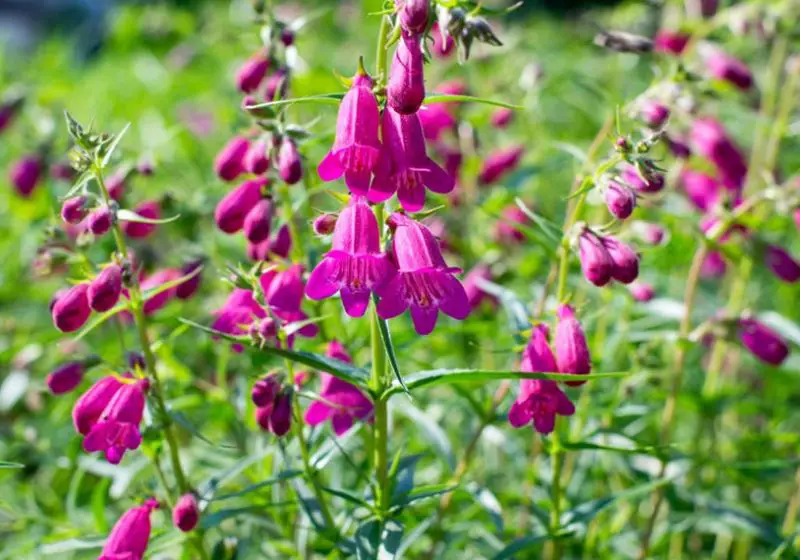
With colorful spikes of tubular blooms that resemble open lips, Penstemon is the biggest genus of flowering perennials in the Plantaginaceae family. They flourish in a variety of North American soil types and temperatures, and are also referred to as bearded tongues. Adding to the graceful symphony of nature, Penstemons flourish in well-drained soil and get partial to full sunlight. Their trumpet-shaped flowers, which come in blue, pink, red, and purple hues, draw pollinators such as hummingbirds and bees.
Pentas
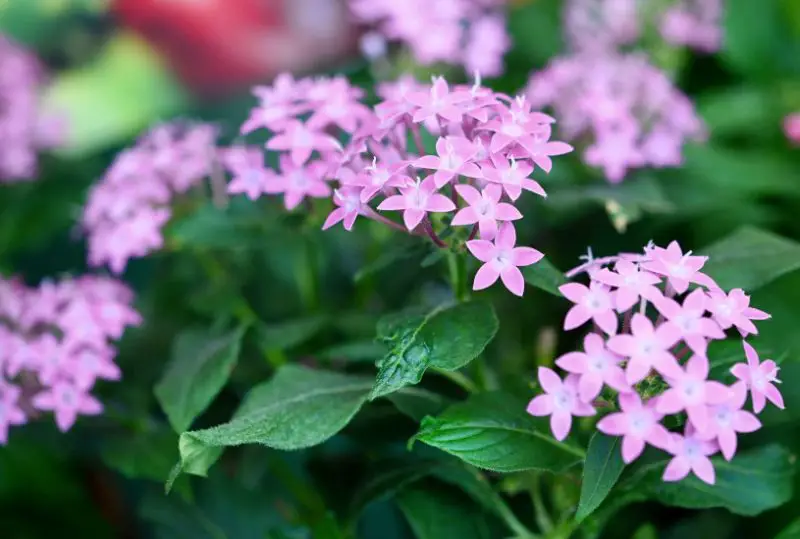
A class of flowering plants known as pentas belongs to the Rubiaceae family and is distinguished by its beautiful star-shaped blooms. Pentas lanceolata is the species that is most frequently grown. Africa and the Arabian Peninsula are the native habitats of these plants.
Periwinkle
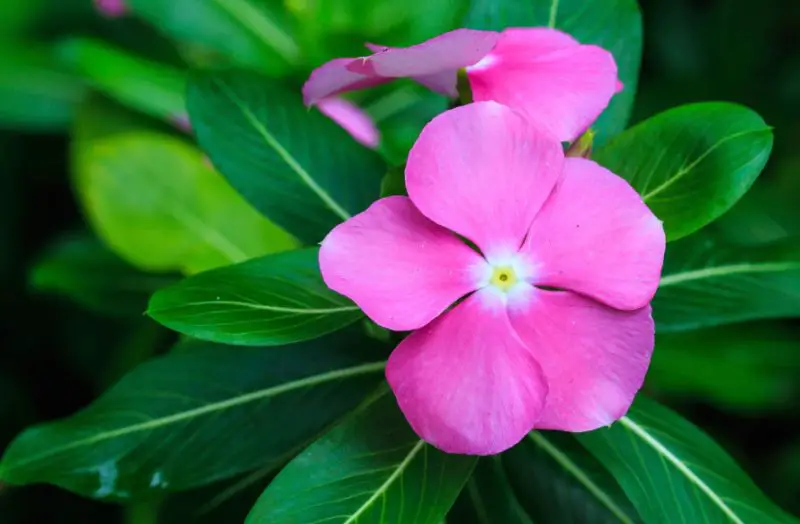
Vinca minor, the scientific name for periwinkle, is a trailing evergreen perennial. It is prized for its pinwheel-shaped blue blooms and glossy, dark green leaves. This ground cover, which thrives in partial to full shade, is prized for its capacity to stifle weeds and create a dense carpet.
Persian Shield
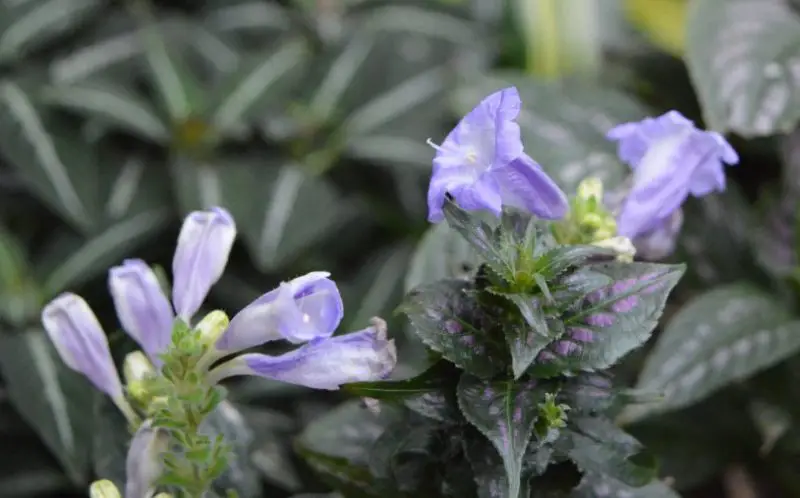
Strobilanthes dyerianus, sometimes known as the Persian Shield, is a colorful tropical ornamental plant native to Myanmar, also known as Burma. Its broad, lance-shaped leaves give gardens an exotic touch with their metallic purple and silver hues. It thrives in moderate shade to full sun, and intense indirect light brings out the richness of its hue.
Persian Violets

Native to Madagascar, Persian Violets (Exacum affine) are prized for their delicate blossoms and verdant foliage. Grown for its fragrant purple star-shaped flowers, they do well in well-drained soil with some to full sun. Their small stature is perfect for window boxes, borders, and containers in both indoor and outdoor environments.
Peruvian Lily
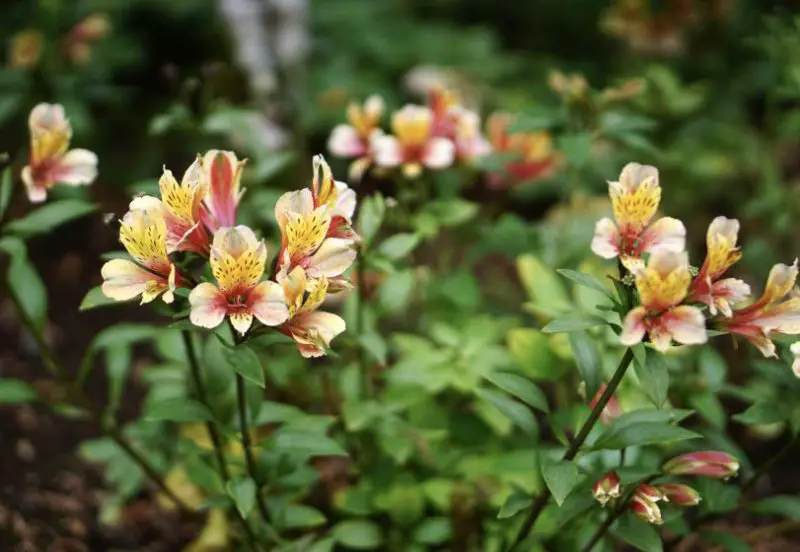
South American native Alstroemeria, or Peruvian lily, is prized for its resilient nature and colorful, trumpet-shaped blossoms. Its blossoms, which represent friendship and prosperity, emerge in a variety of colors, signifying enduring beauty. Loved by florists and gardeners alike, it bears flowers for a long time, symbolizing friendship and timeless beauty.
Petunias
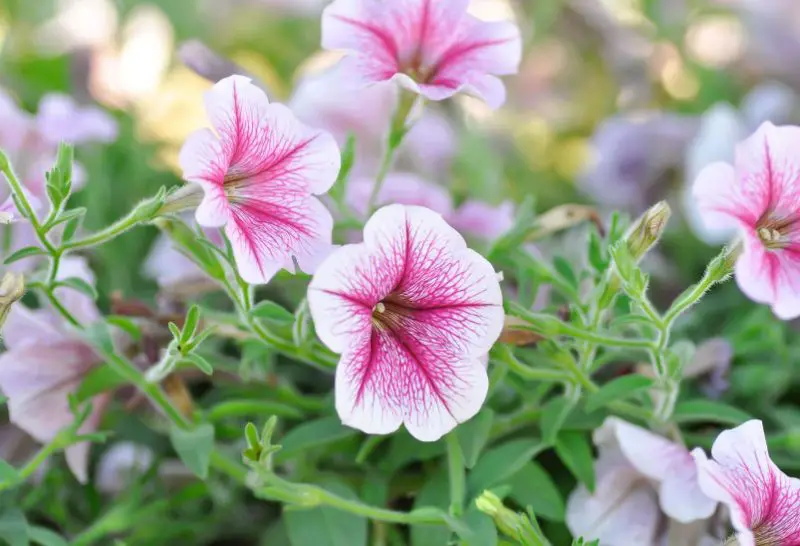
Solanaceae family members petunias are popular annuals with bright red, pink, purple, or white blooms. Their cascading growth pattern attracts bees and butterflies, and they grow well in gardens, containers, and hanging baskets. They are native to South America. They are prized for their beauty and improve both floral arrangements and landscapes.
Phalaenopsis
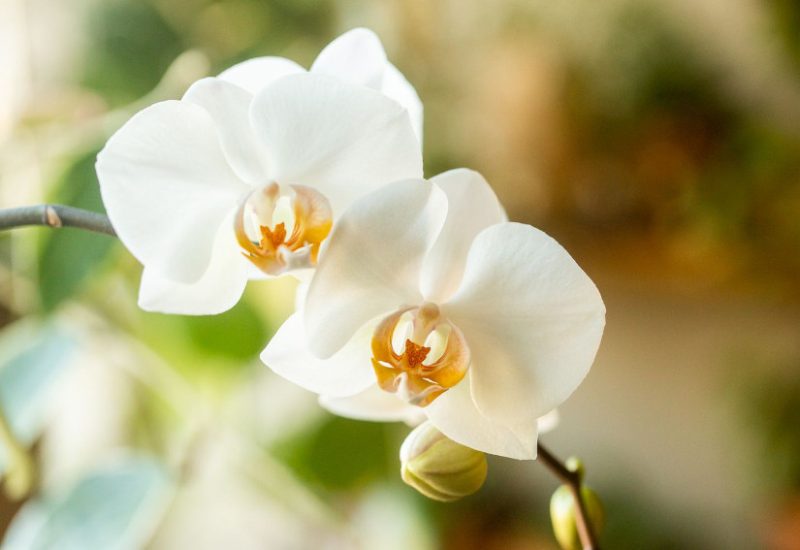
Officially named Phalaenopsis, the Moth Orchid is a gorgeous houseplant renowned for its lush foliage and delicate blossoms. Typically given as a gift to convey appreciation and grace, this member of the Orchidaceae family represents love, beauty, and refinement. Phalaenopsis orchids are a symbol of beauty and perseverance since they may bloom repeatedly with proper care.
Phlox
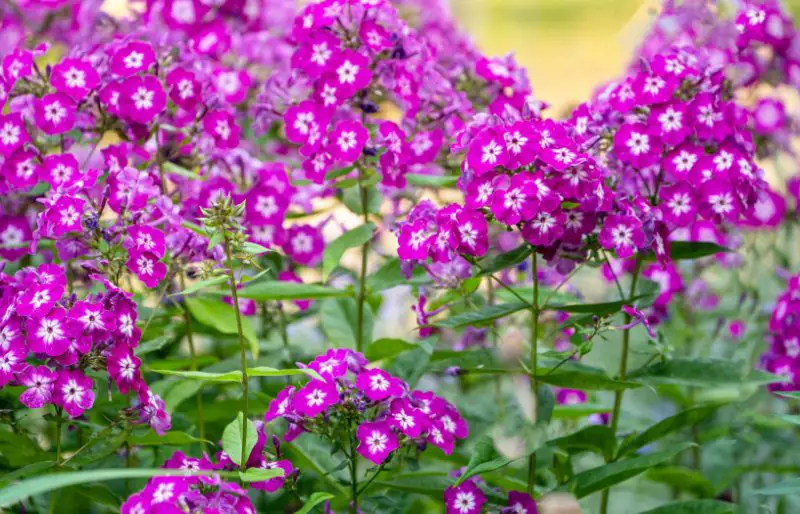
Phlox, a member of the Polemoniaceae family, with vivid clusters of fragrant flowers with five petals. They are perfect for garden borders and floral arrangements since they thrive in well-drained soil and full sunlight, drawing pollinators like bees and butterflies. Because of its vivid colors, the word “phlox” comes from the Greek word meaning flame.
Phlox subulata
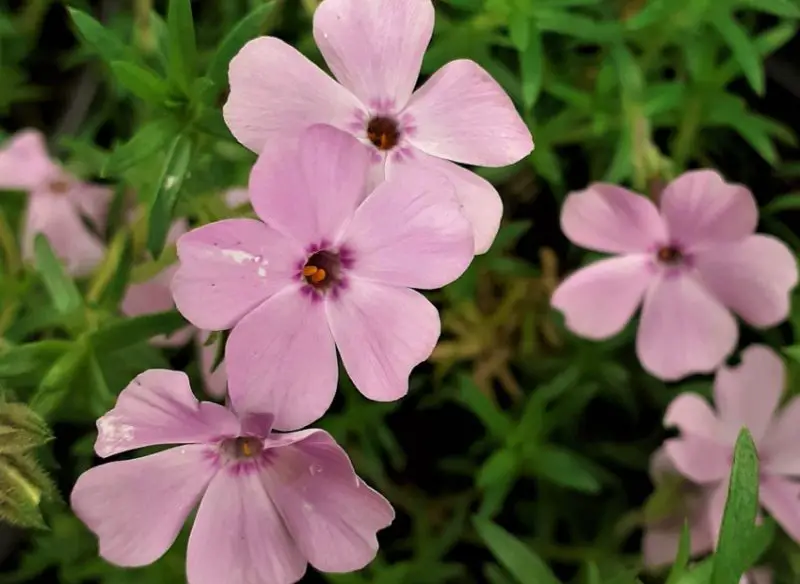
The ground cover Phlox subulata, sometimes called Creeping Phlox, is distinguished by dense mats of evergreen foliage. It creates colorful, cascading carpets with an abundance of tiny, star-shaped red, pink, and white flowers. It is adaptable to rocky and sandy soils.
Plantago major
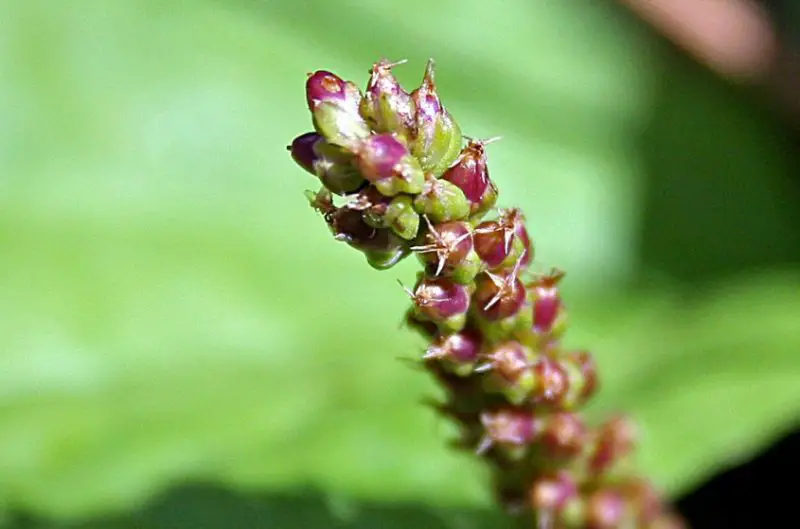
Broadleaf plantain, or Plantago major, is a multipurpose herb in the Plantaginaceae family. It is a grassy plant with broad, oval leaves and barely noticeable flower spikes that grows on lawns and meadows. It has therapeutic qualities and is used in wound salves and poultices. Its leaves are edible and taste slightly bitter, but they are still good in salads.
Pincushion Flower
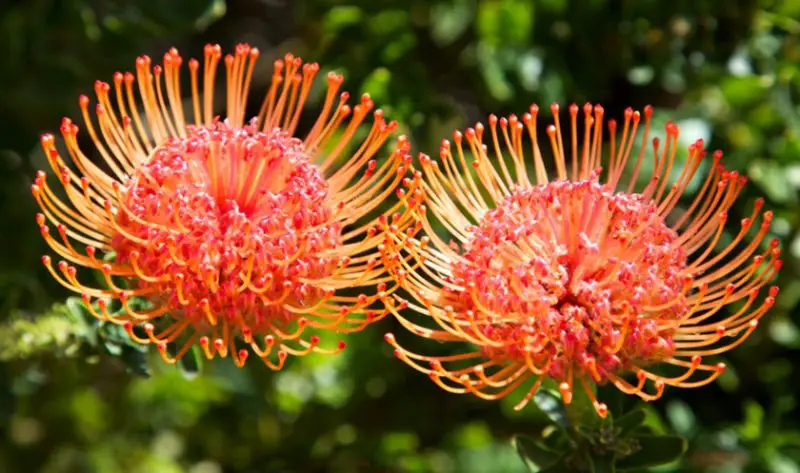
Scabiosa, or pincushion flower, is a type of perennial flower that has unusual blooms resembling pincushion shapes. As a member of the Dipsacaceae family, this bloom is one of the most exquisite “P” flowers. Its nectar-rich blossoms draw bees and butterflies to gardens, and it thrives in well-drained soil.
Pineapple Sage

Salvia elegans, sometimes known as pineapple sage, is a fragrant herb valued for its flavorful leaf and adaptability in cooking. It is a member of the Lamiaceae family and is native to Mexico and Guatemala. When added to drinks or used as a garnish, its leaves give food a pleasant hint of pineapple flavor.
Pineapple Lily
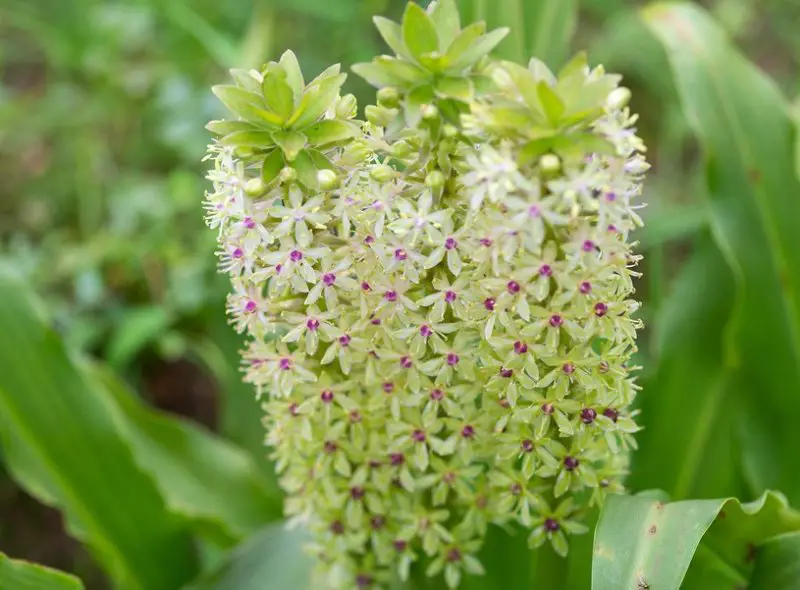
The bulbous plant known scientifically as Eucomis, or pineapple lily, is prized for its remarkable and distinctive pineapple-like flower spikes. This perennial, which is native to South Africa, blooms in the summer with green or burgundy bracts topped with star-shaped flowers. Pineapple Lily is a popular choice for gardens, containers, and floral arrangements because of its exotic appeal.
Pinks
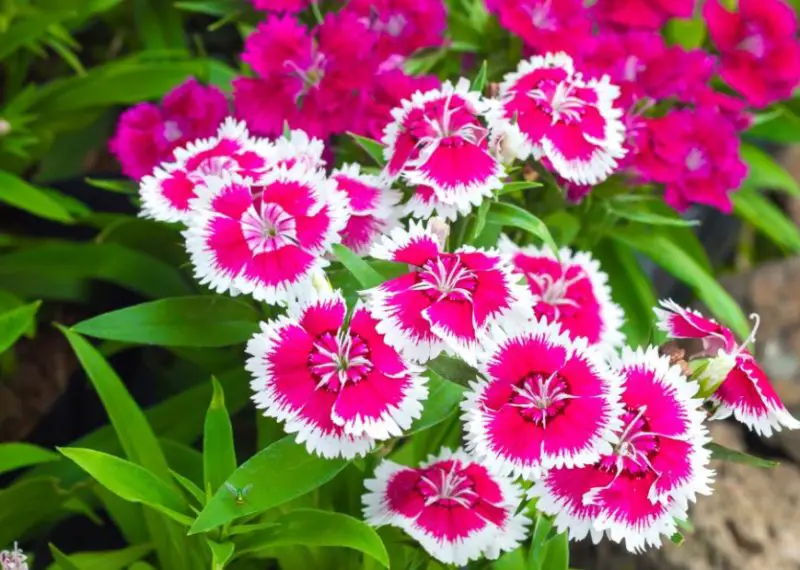
The term “pinks,” also known as garden dianthus, comes from the notched edges of its petals, which resemble shear cuts. They are essential components for creating the traditional charm of a “English Cottage Garden,” and maintaining this classic appearance requires careful placement and maintenance.
Pink Diamond Hydrangea
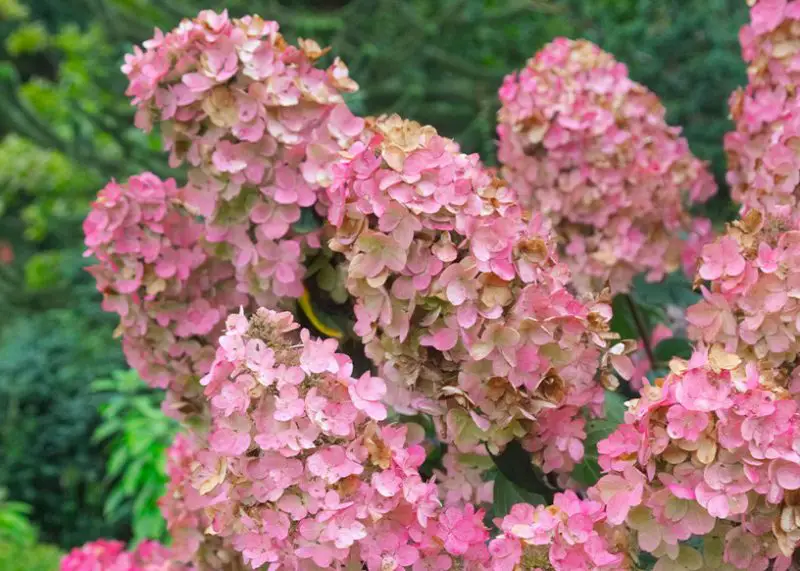
Pink Diamond Hydrangea (Hydrangea paniculata ‘Pink Diamond’) is valued for its robust growth and vibrant flower clusters. It’s a popular choice for borders, hedges, or freestanding ornamental use. It thrives in well-drained soil and receives medium to full sunlight. Its blossoms change color from creamy-white to vivid pink, signifying thankfulness and deep feelings. Its ability to alter color in reaction to the pH of the soil is an interesting property that allows for creative control over its look.
Pink Evening Primrose

Pink Evening Primrose (Oenothera speciosa) is a member of the Onagraceae family. Coming from North America, it grows well in borders and cottage gardens. From light pink to deep rose, the cup-shaped flowers bloom in the evening.
Prairie Smoke
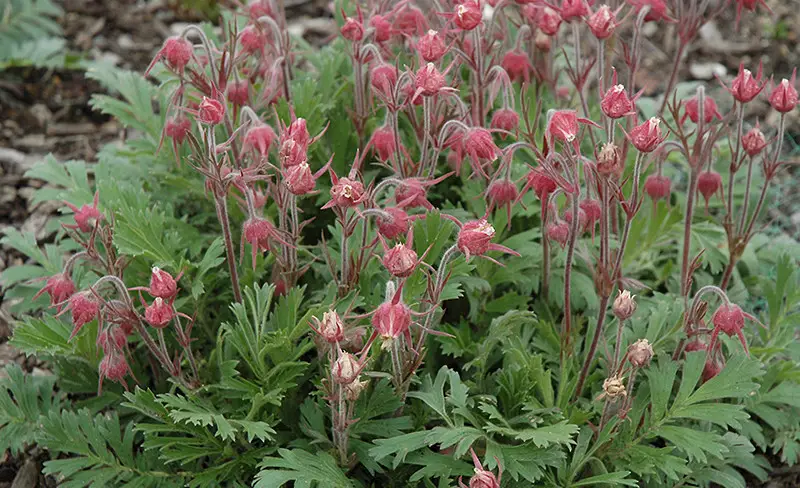
Three-flowered avens, or prairie smoke (Geum triflorum), are members of the Rosaceae family of roses. It has pink-hued, bell-shaped blooms that nod. Its distinctive feathery seed heads, which resemble smoke or plumes, appear after it blooms. These seed heads help disperse seeds by catching the wind and enabling them to travel to new locations, improving its capacity to colonize a variety of habitats.
Prairie Star

Belonging to the Saxifragaceae family, the prairie star (Lithophragma parviflorum) has slender stems topped with clusters of small, star-like blooms that are frequently found in meadows, prairies, and the edges of woodlands.
Primrose
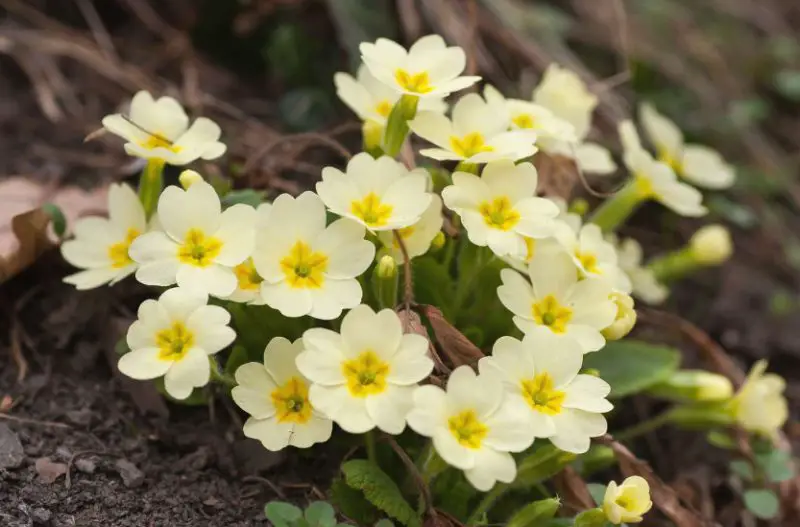
Primula vulgaris, the scientific name for primrose, is a pretty and useful plant that blooms in early spring. Originating in Europe, it is well-known for its base rosette of wrinkly leaves and clusters of fragrant blooms in colors of pink, purple, white, and yellow.
Primula auricula
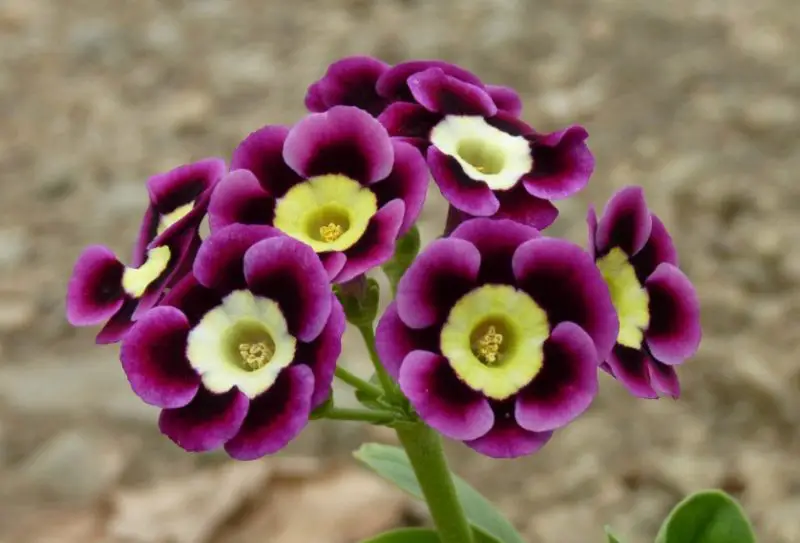
Primula auricula is a member of the Primulaceae family and is often known as mountain cowslip or auricula. It is native to mountain areas in central Europe, growing well on simple rocks and producing powdery-coated, bright yellow blooms.
Poached Egg Plant
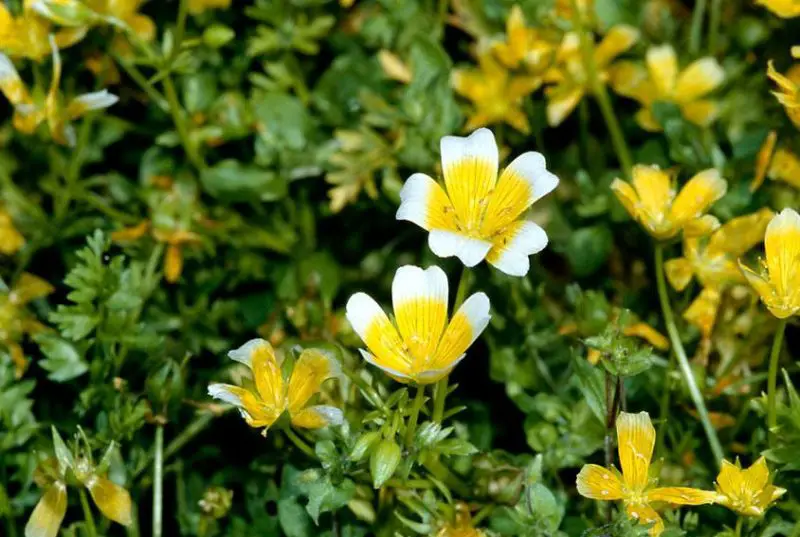
The Poached Egg Plant, or Limnanthes douglasii, is a mesmerizing plant with dazzling white and yellow cup-shaped flowers that resemble poached eggs. This plant attracts insect predators and makes a great ground cover, especially along walkways. It also works well in vegetable gardens.
Polyanthus
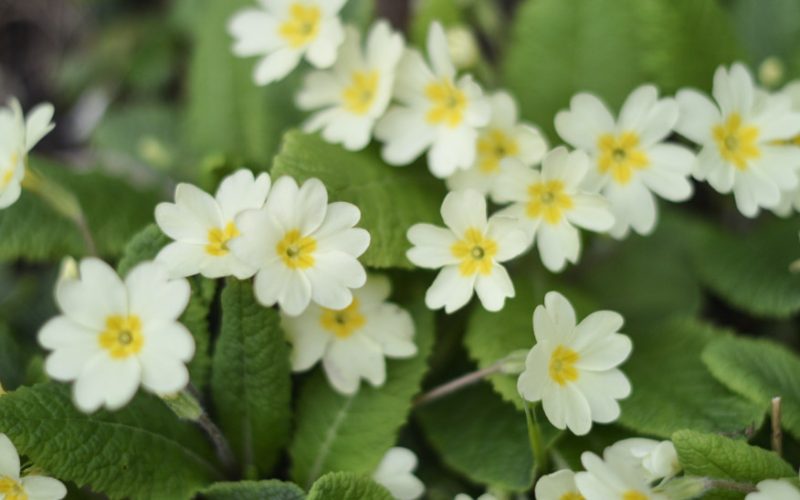
Plants that bloom belong to the Primulaceae family, which includes Polyanthus. It is a well-liked option for spring gardens because of its clusters of fragrant, bright flowers.
Pot Marigolds
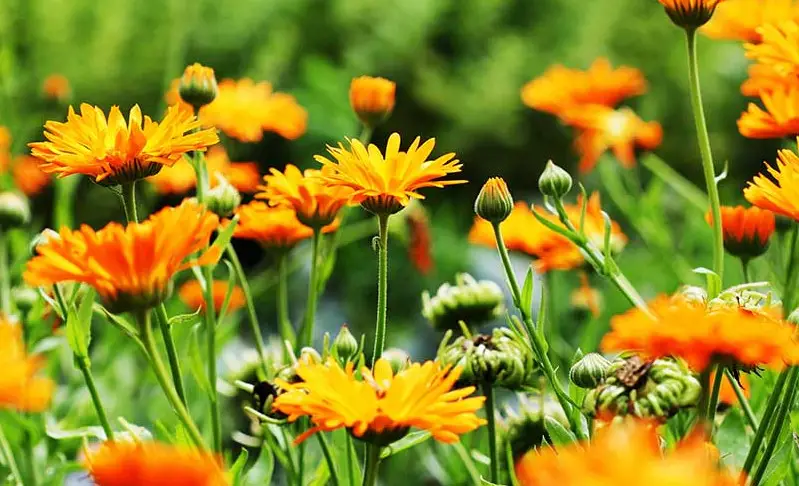
Calendula officinalis, or pot marigolds, are popular annual plants valued for their medicinal qualities and vivid orange and yellow blooms. They thrive in soil that is well-drained and relatively rich, and they can withstand summer shade. Their petals, which are frequently used to produce oils, tinctures, salves, or shampoo bars, have therapeutic properties.
Prince of Wales Feather
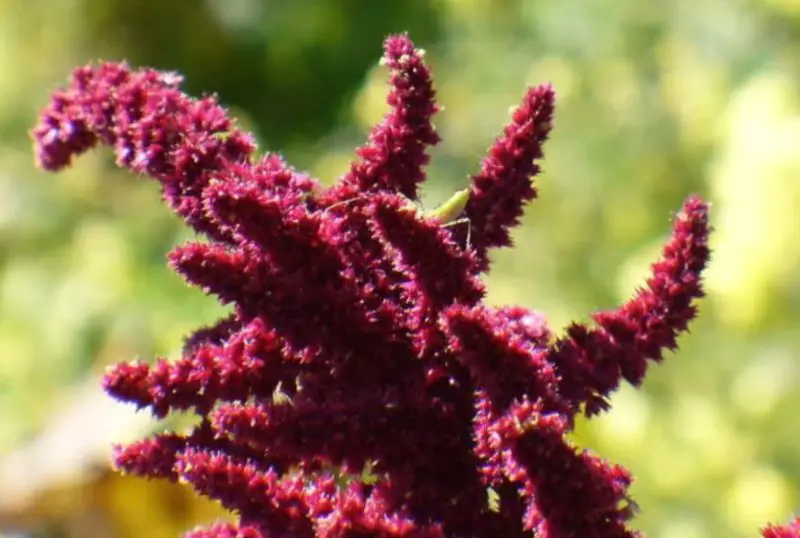
The annual flowering plant known as Prince of Wales Feather (Amaranthus hypochondriacus) is distinguished by its eye-catching, erect plumes of red or green blooms. It gives gardens a distinctive and striking touch.
Profusion White
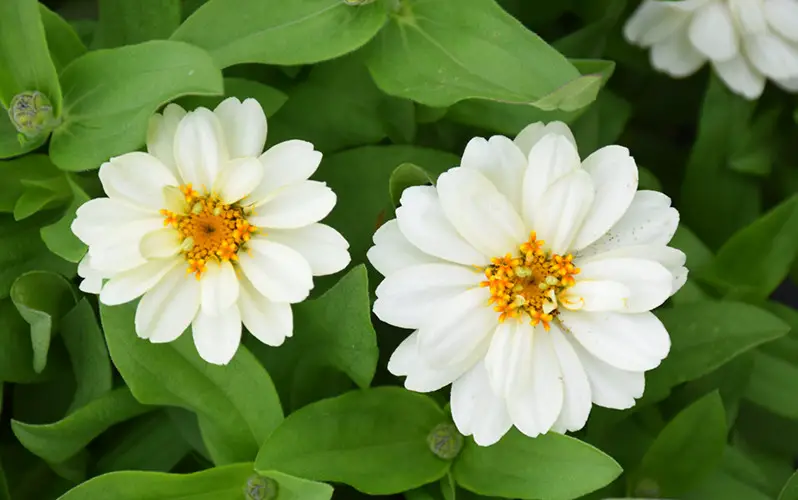
A Profusion of Combining Augustifolia and Elegans types, White Zinnia is a hybrid plant of the daisy family. Its little white flowers with yellow centers draw butterflies and birds and require little upkeep. It is very weather resistant. An exquisite cut flower, this award-winning annual grows well in gardens or containers.
Purple Cornflower
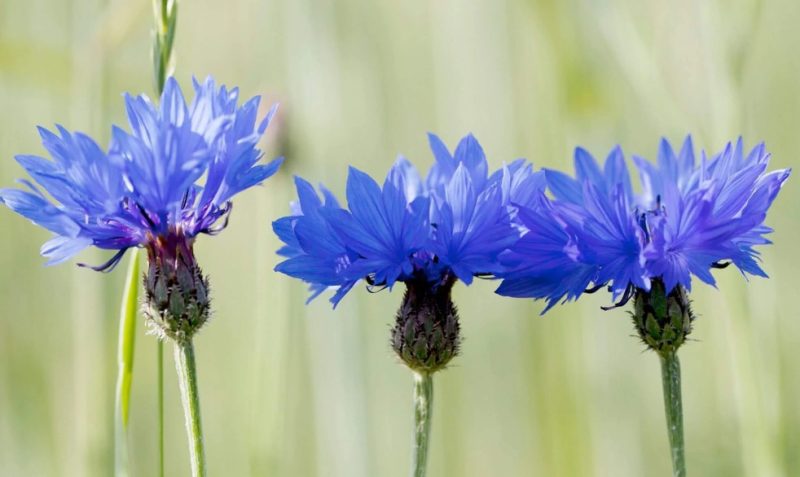
Purple Cornflower adds a striking vertical element to gardens with its tall stems and purple or pink blooms from late spring to early summer. Echinacea, a well-known perennial herb, offers medicinal benefits, including immunity support against colds and infections. Enjoy it brewed as tea or as a tincture for immune-boosting properties.
Purple Loosestrife
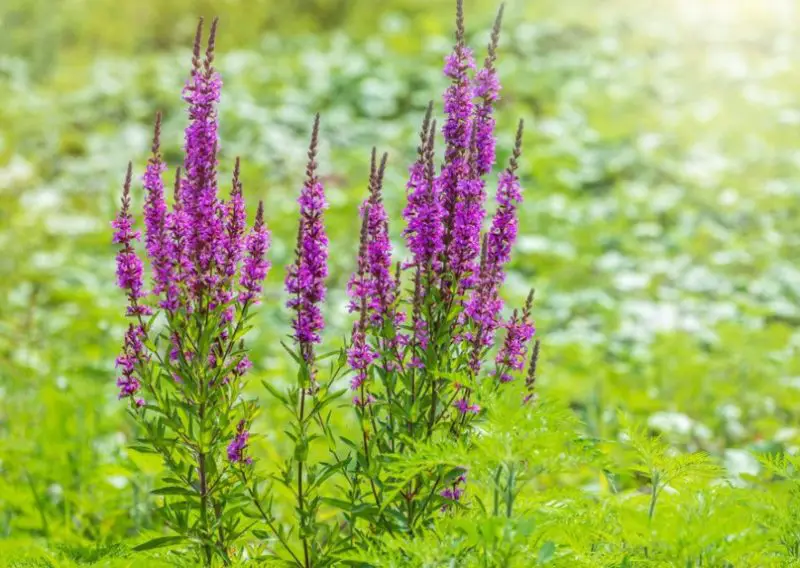
Tall spikes of purple-pink blooms adorn the perennial Purple Loosestrife wildflower. It enhances the color and texture of natural landscapes and is frequently found in marshes.
Purslane
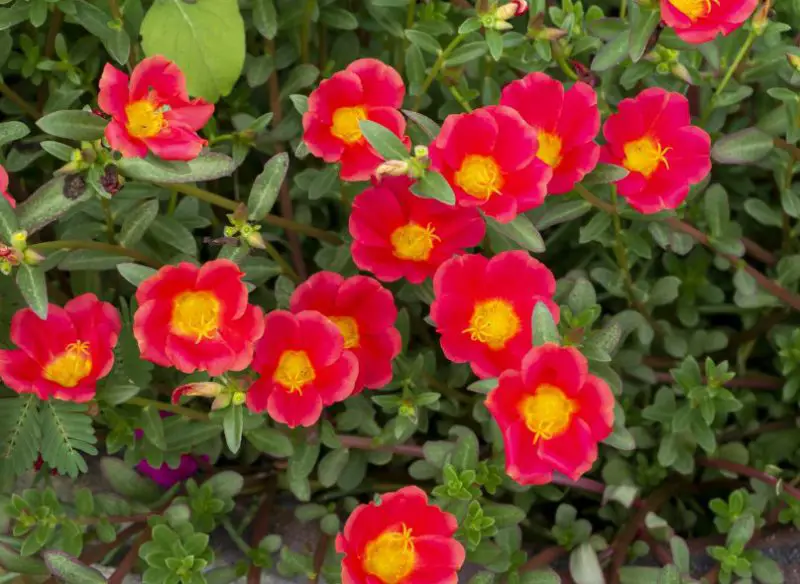
Low-growing and succulent, purslane (Portulaca oleracea) is loved as a healthy green for soups and salads but considered a weed in other areas. Its anti-inflammatory qualities are another reason why traditional medicine values it. Purslane is a plant that grows best in full sun and well-drained soil. It has fleshy leaves and tiny yellow blooms that indicate how adaptable and resilient it is under trying circumstances.
Protea

Native to the Southern Hemisphere, Protea is a beautiful genus of flowering plants distinguished by its unusual and frequently huge flower heads that combine a variety of vivid colors and intriguing patterns.
Polka Dot Plant
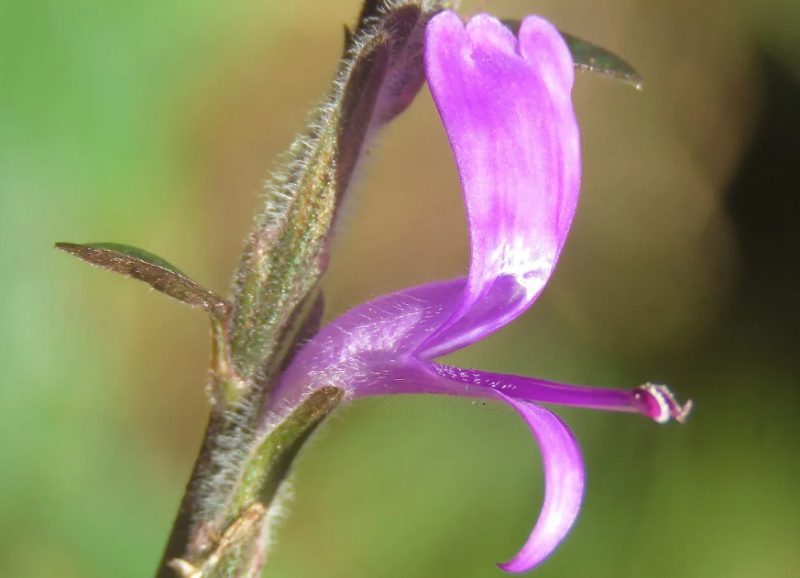
The colorful foliage of the Polka Dot Plant (Hypoestes phyllostachya) is highly appreciated as it features amusing polka dot patterns. Its vibrant leaves are what really draw people in, even though it only produces tiny, insignificant blooms. This makes it a visually pleasing and low-maintenance decorative plant.
Poppy
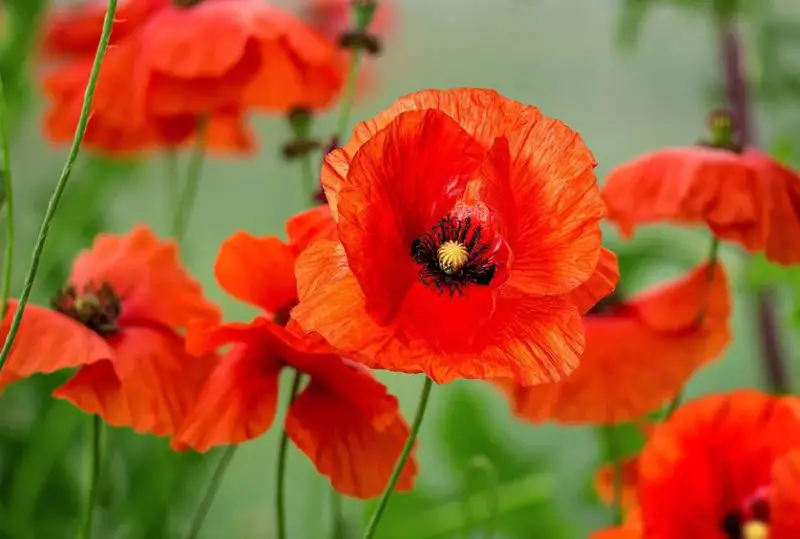
Poppy has cultural and symbolic value due to its vivid cup-shaped blooms in red, orange, pink, and white. Particularly on Memorial Day, many wear red poppies as a timeless emblem of remembrance in honor of those who gave their lives for their country. Inspirational quotes usually feature poppies as symbols of beauty and memory.
Pyracantha
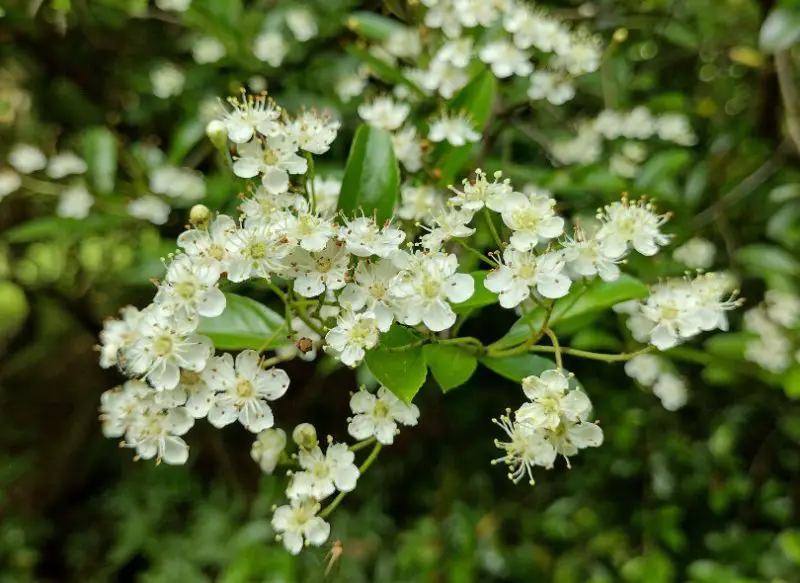
Pyracantha, sometimes known as Firethorn, is a decorative shrub valued for its vivid red, orange, or yellow berries. It is a visually pleasing and security-enhancing option for gardens due to its prickly branches and evergreen leaves. Small white flowers emerge in late spring, followed by vibrant berries that provide year-round visual interest.
Pink Jasmine
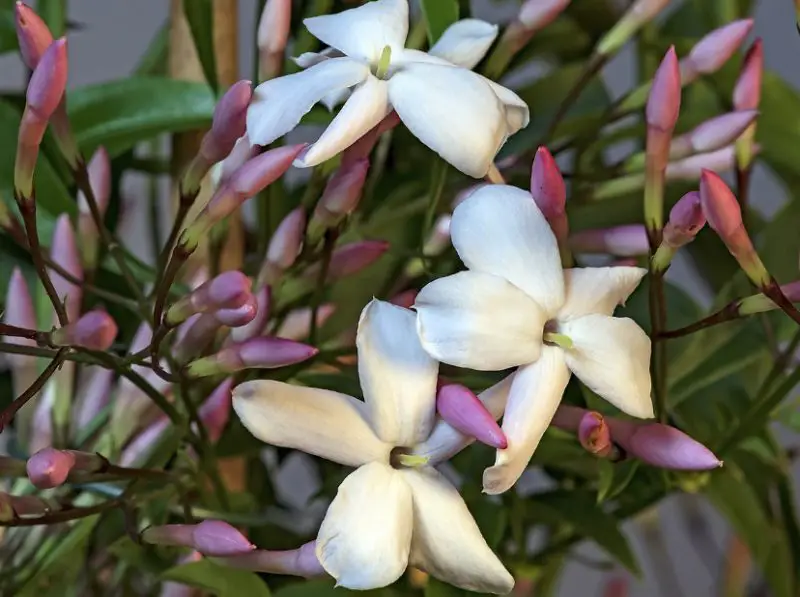
The fragrant, pink to white petals of the pink jasmine, or Jasminum polyanthum as it is officially termed, are what make this climbing vine so popular. It is native to China, belongs to the Oleaceae family, and is prized for its aromatic and attractive characteristics.
Pink Lady’s Slipper
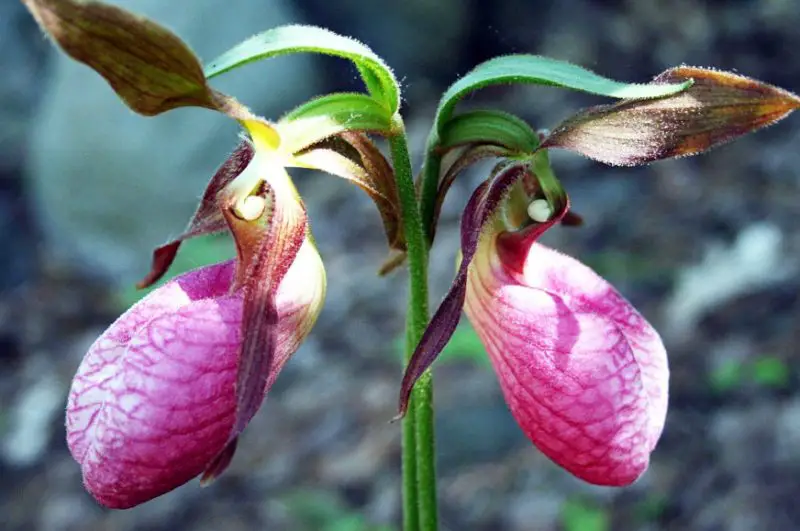
The scientific name for the wild orchid known as Pink Lady’s Slipper is Cypripedium acaule, and it can be found in North American woodland environments. This terrestrial orchid is prized for its unusual, slipper-shaped pink blossoms and is uncommon and beautiful.
Pink Muhly Grass

Muhlenbergia capillaris, sometimes known as pink muhly grass, is an ornamental grass valued for its gorgeous, airy pink inflorescences that resemble cotton candy clouds. This natural grass of North America, which belongs to the Poaceae family, is prized for its striking color and distinctive texture.
Pink Shower Tree
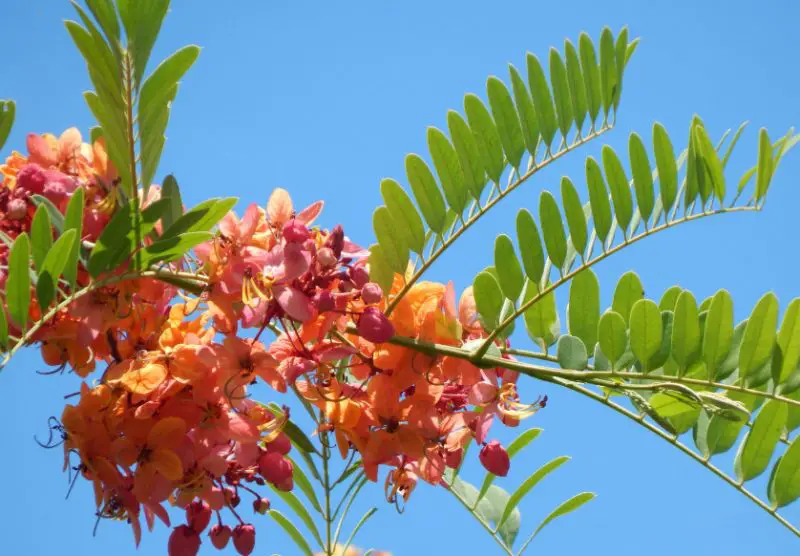
The magnificent flowering tree known as the Pink Shower Tree, or Cassia grandis in technical parlance, is prized for its enormous, cascading clusters of pink blossoms. This tropical tree, which belongs to the Fabaceae family and is native to Central and South America, gives landscapes a vivid touch.
Pixie Moss
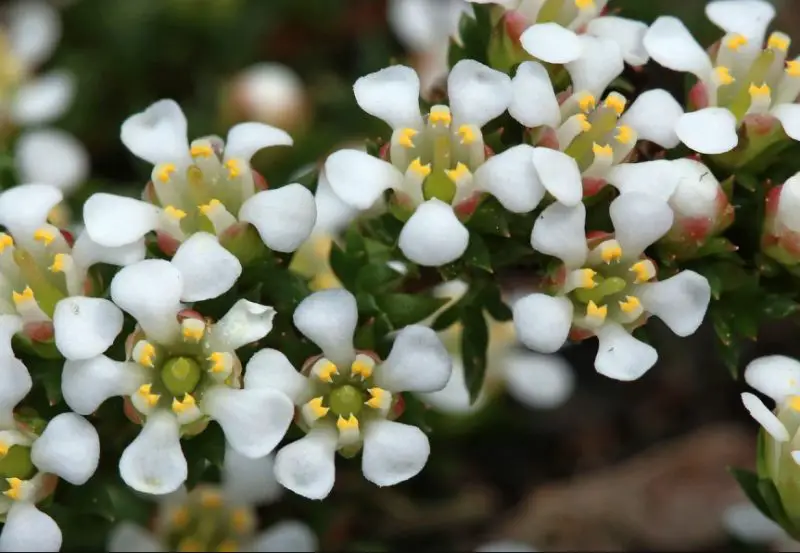
Despite its name conjuring up images of fairies, Pixie Moss (Pyxidanthera barbulata) is actually a pretty flowering plant, not moss. Grows in low, moss-like mats that are suddenly covered in tiny white blooms, each with five delicate petals, in late April and early May.
Plantain Lily
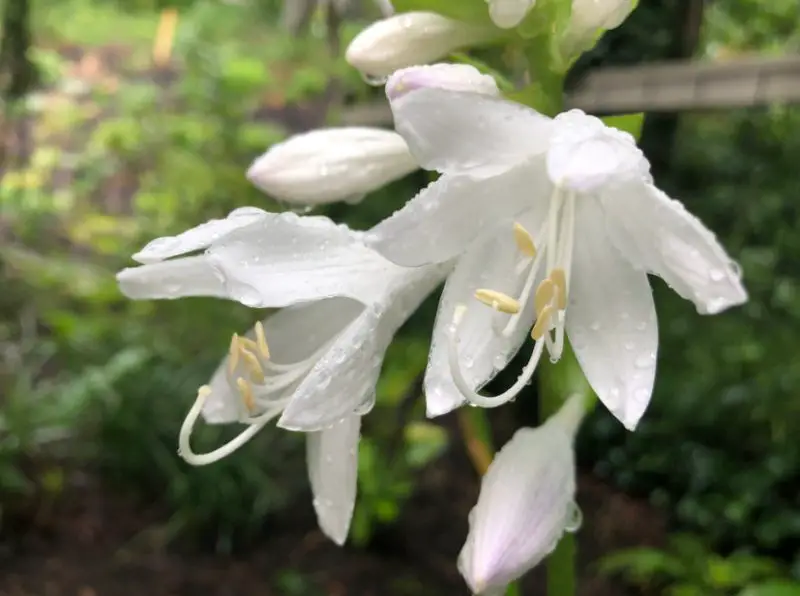
Hosta, sometimes referred to as the plantain lily, is a shade-loving plant with thick, luxuriant leaves that have variegated patterns and hues of blue, green, and purple. Hostas are planted mainly for their leaves, however they do produce flower spikes with bell-shaped blooms.
Plumbago
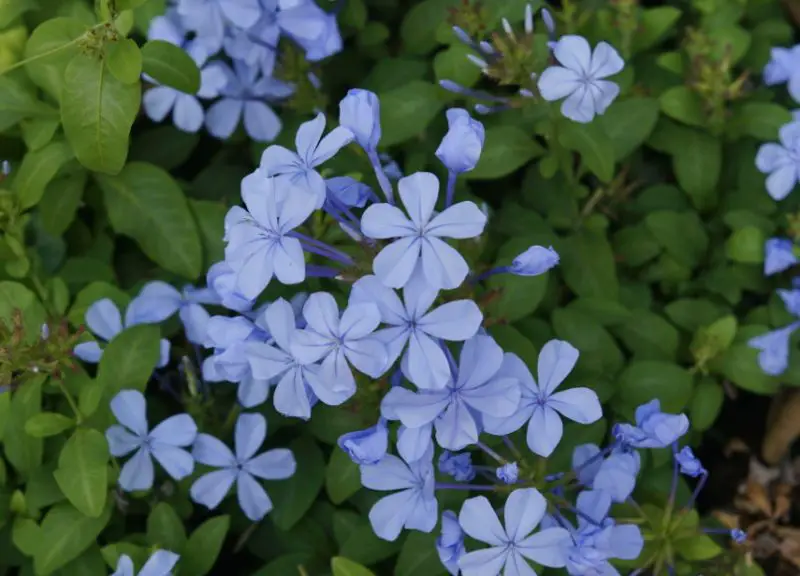
The plubago, which blooms delicately from late spring to early October, casting a gentle blue or white glow over the countryside. It is a beloved addition because of its hardiness and low maintenance requirements. It continues to offer color and elegance long after other flowers have completed flowering.
Plumeria

Tropical plants known as plumeria, or frangipani, are prized for their vivid, fragrant flowers that come in shades of white, pink, yellow, and red. Although native to Central America, Mexico, and the Caribbean, this member of the Apocynaceae family is commonly grown in gardens, landscapes, and potted plants.
Poinsettia
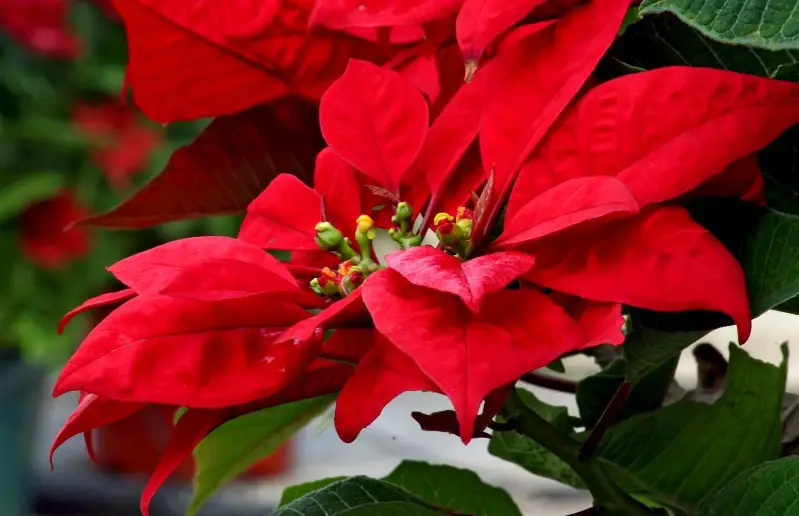
The colorful poinsettia (Euphorbia pulcherrima), a native of Mexico, is linked to the holiday season. Many times, people confuse its eye-catching crimson bracts for flowers. named in honor of Joel Poinsett, the American envoy to Mexico who brought it to the country in the early 1700s.
Prickly Pear
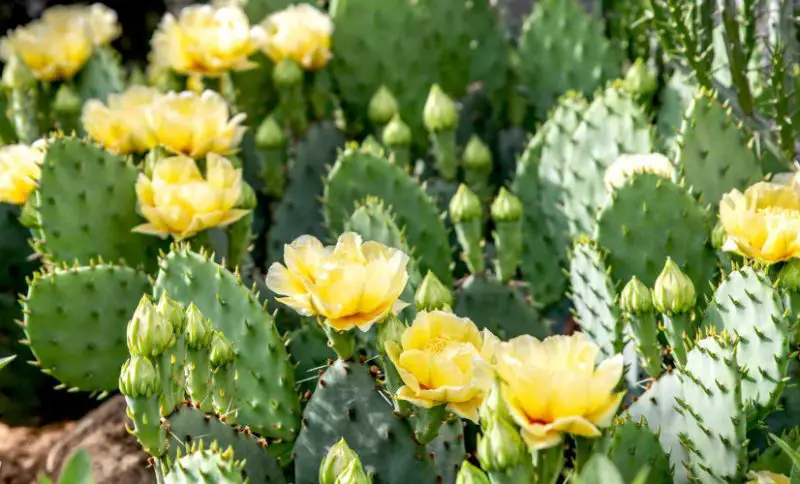
The Cactaceae family cactus known as Prickly Pear (Opuntia) has flattened pads and prickly glochids. It is native to the Americas and helps with survival in dry climates by storing water in succulent pads. Prickly pears, also known as tunas, are delicious, sweet fruits that are produced by the plant’s green or bluish-green pads.
Prairie Gentian

Lisianthus, or prairie gentian (Eustoma grandiflorum), is renowned for its vivid, rose-like blossoms that are frequently confused for actual roses. But Prairie Gentian is a preferred cut flower for bouquets since it can withstand greater heat and lasts longer in the vase.
People Who Read This Also Read:






